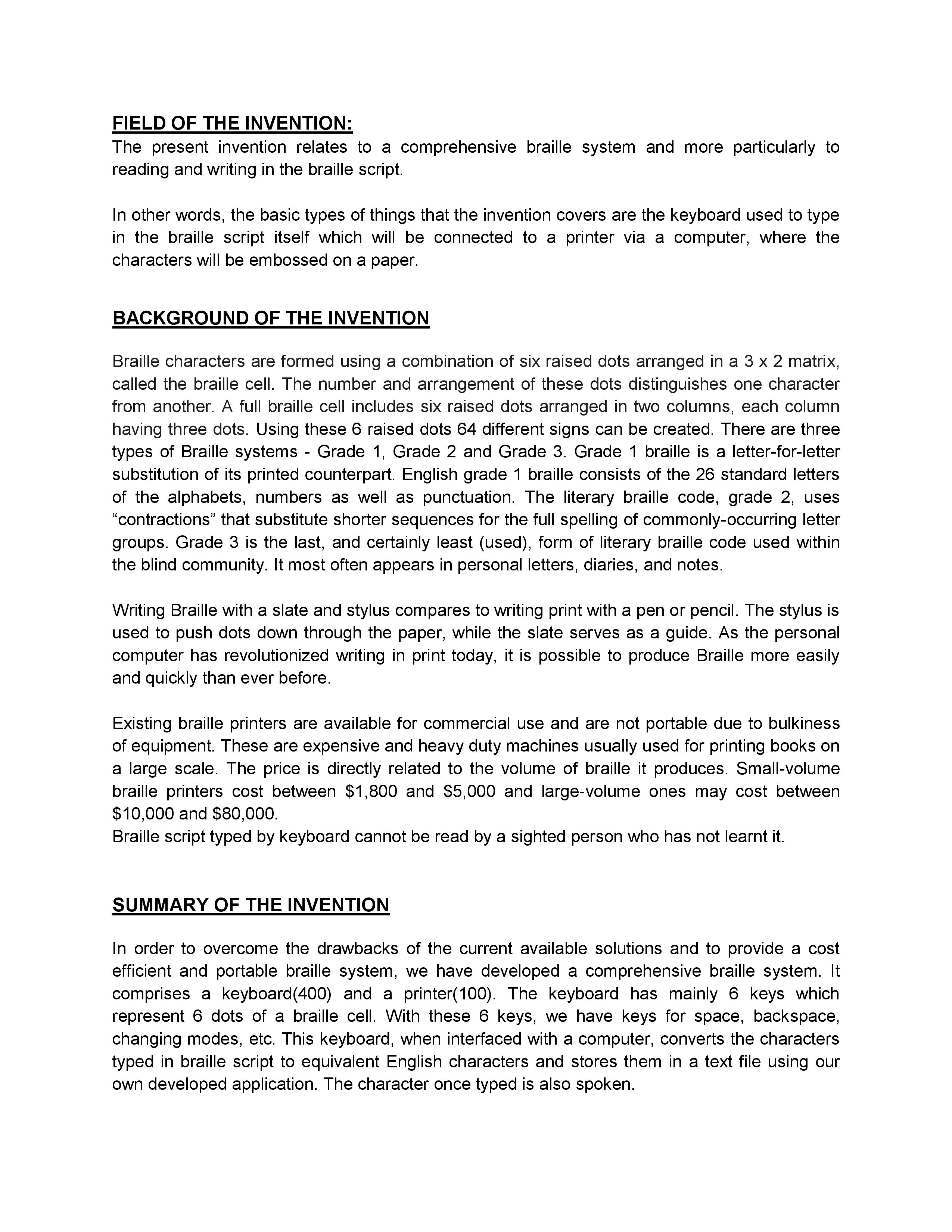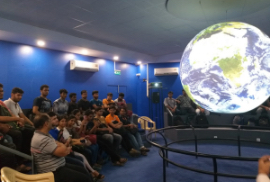Accomplishments

BRAILLE KEY BOARD PRINTER
Braille characters are formed using a combination of six raised dots arranged in a 3 x 2 matrix, called the braille cell. The number and arrangement of these dots distinguishes one character from another. A full braille cell includes six raised dots arranged in two columns, each column having three dots. Using these 6 raised dots 64 different signs can be created. There are three types of Braille systems - Grade 1, Grade 2 and Grade 3. Grade 1 braille is a letter-for-letter substitution of its printed counterpart. English grade 1 braille consists of the 26 standard letters of the alphabets, numbers as well as punctuation. The literary braille code, grade 2, uses “contractions” that substitute shorter sequences for the full spelling of commonly-occurring letter groups. Grade 3 is the last, and certainly least (used), form of literary braille code used within the blind community. It most often appears in personal letters, diaries, and notes. Writing Braille with a slate and stylus compares to writing print with a pen or pencil. The stylus is used to push dots down through the paper, while the slate serves as a guide. As the personal computer has revolutionized writing in print today, it is possible to produce Braille more easily and quickly than ever before. Existing braille printers are available for commercial use and are not portable due to bulkiness of equipment. These are expensive and heavy duty machines usually used for printing books on a large scale. The price is directly related to the volume of braille it produces. Small-volume braille printers cost between $1,800 and $5,000 and large-volume ones may cost between $10,000 and $80,000. Braille script typed by keyboard cannot be read by a sighted person who has not learnt it.




















